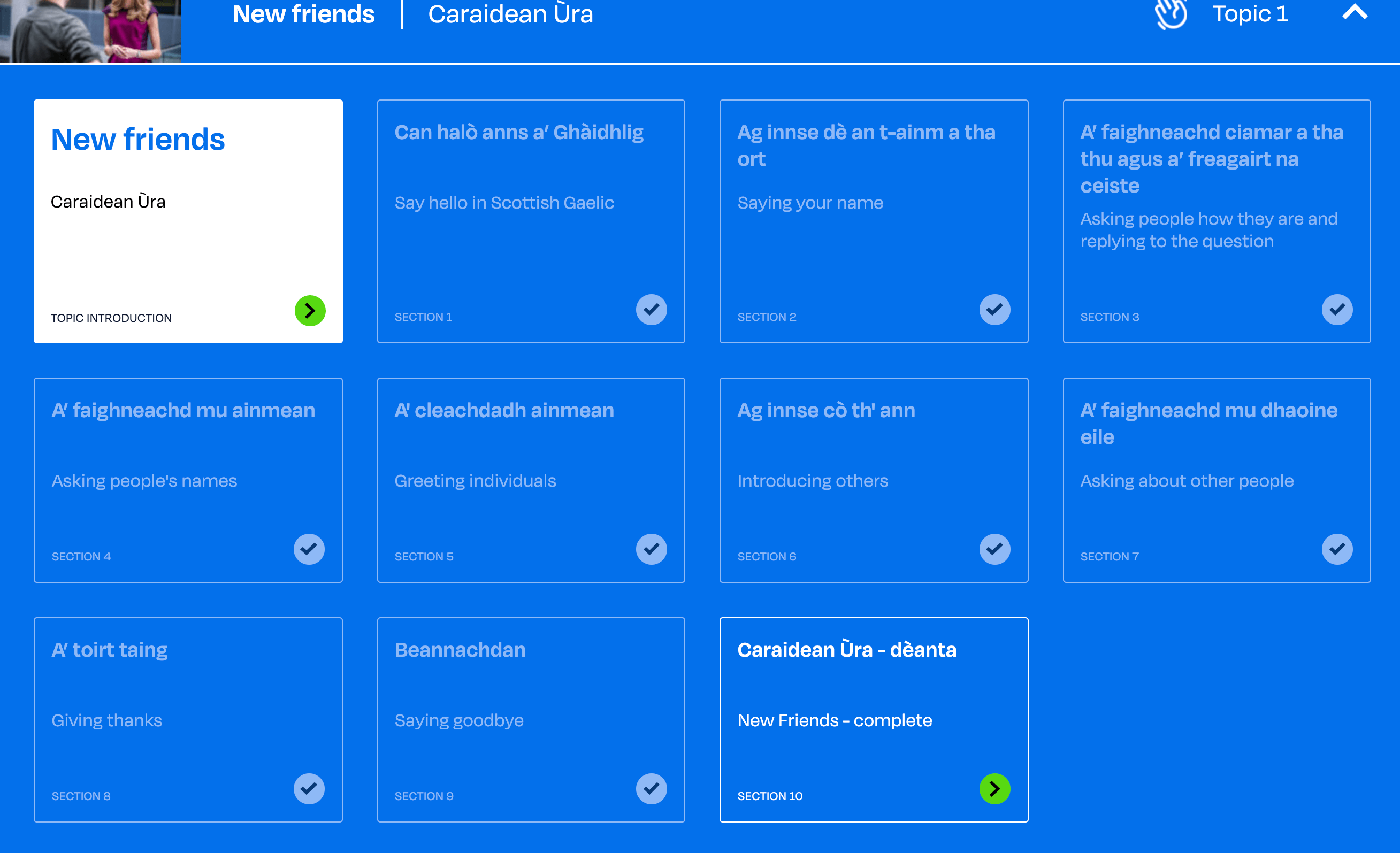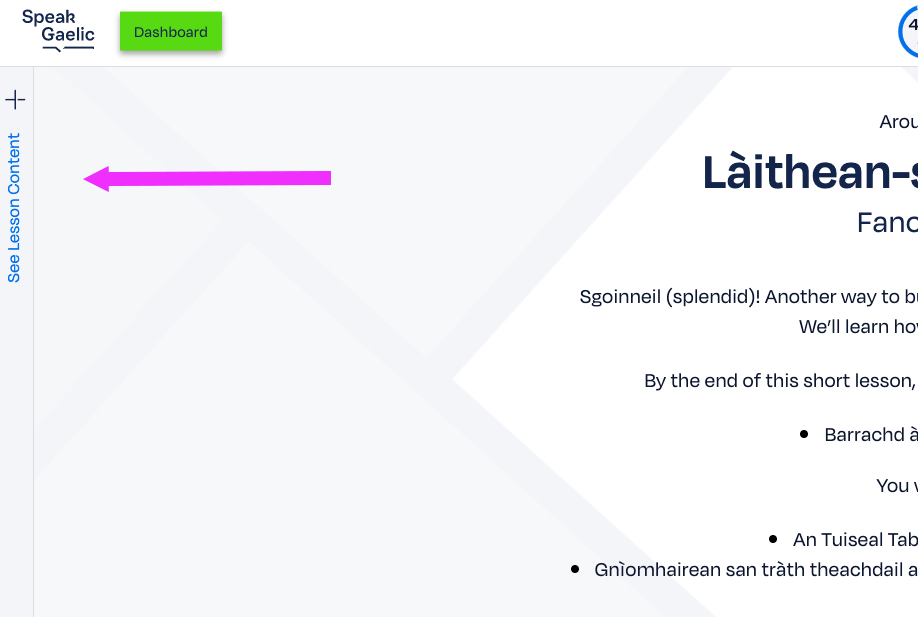Ri dhèanamh
To do | To be done
We saw at B1 that we can use ri with a verbal noun to say that there is something ri dhèanamh (to be done), ri fhaicinn (to be seen), ri fhaighinn (to be had).
As we will see later in the section on rèim–chainnte (linguistic register), there are ‘rules’, or grammatical practices that some people only follow in formal speech or writing.
Let’s look at the rules for ri again here.
MÌNEACHADH | EXPLANATION: Obair ri dèanamh
We can use forms of the verb bi and the preposition ri with a verbal noun to express that something ‘is to be done’.
When the preposition ri is used with a possessive adjective—mo, do, a, a (h–), ar (n–), ur (n–), an/am)—they are often combined into a shortened form (in right-hand column):
| ri mo (lenition) | rim |
| ri do (lenition) | rid |
| ri a (masc, lenition) | ri + lenition) |
| ri a (fem) | ri (h–) |
| ri ar | rir |
| ri ur | rur |
| ri an ri am (m, b, f, p) | rin/ rim |
A bheil rudeigin ri dhèanamh?
Is there something to be done?
Tha obair ri dèanamh
There is work to be done
Tha toglaichean a’ bhaile rin càradh
The buildings of the town need to be fixed
Bidh mi rim lorg san oifis
I will be found in the office
When ri is used like this, its possessive form should correspond with the gender or number of the thing being referred to.
While this is typically done when used with a clear passive meaning, as in the examples above, this rule is not as commonly followed when ri is used in the phrase tha [NOUN] agam ri, where lenition is more commonly used:
Tha obair ri dèanamh
There is work to be done
Tha obair agam ri dhèanamh
I have work to do
While the following are technically correct, they probably sound very formal to many Gaelic speakers:
Tha deuchainnean agam rin ceartachadh
I have exams to correct
Tha obair agam ri dèanamh
I have work to do




